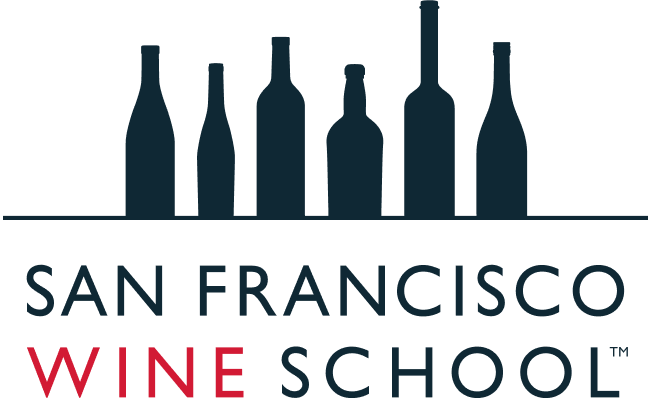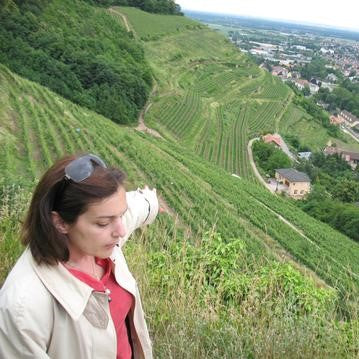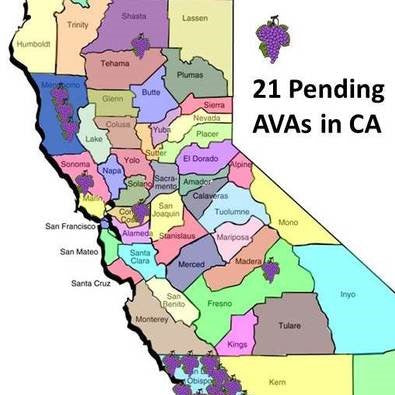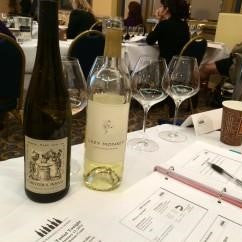New Releases & Updates
Severine Schlumberger at Kitterle Grand Cru
Since 2008, Alsace Rieslings have been obliged to be less than 9 g/l residual sugar, marking the interests of those who have long touted a preference for drier Rieslings. Vendanges Tardives (VT) and Sélection de Grains Nobles (SGN) are excluded from this regulation. Other legislative changes include the 2011 creation of lieu-dit and communal labeling within the Alsace AOC and all 51 Grand Cru vineyards being awarded individual AOC status. During a morning visit Paul Blanck recounted, “the early process of climatic delimitation in Alsace wasn’t successful, so the Grand Cru commission’s presidency fell to that of an outsider. It was politically incorrect to discuss issues surrounding it a few years ago, but is no longer so, due to Olivier Humbrecht now being in charge of the development of a pyramid-style Cru system akin to that of Meursault’s. He affirmed his belief that, “cru is a communication concept that works, not that of villages”.
Biodynamic pioneer André Ostertag chooses to barrel ferment all of his Rieslings to dryness. For 2011 his Heisenberg has a stony, acacia-like nose with a clear, spicy palate hinting of sweetness and minerals. His Muenchberg is restrained with a very minerally nose and a lightly spicy palate. Hugel’s entry level is a solid performer befitting what’s expected of this venerable house–medium body, dry with a roundness that’s pleasing. Ehrhart’s Vieilles Vignes has a nose and taste of dry quince, Weinbach’s Cuvée Théo has a pleasantly full nose and a medium-bodied palate of young apples and pears, Kuentz-Bas’s is tight both on nose and palate with firm acidity. In 2010 Bott-Geyl’s ‘Les Éléments’ closed nose yields plenty of body and balance that held up when tried a day after opening, Paul Blanck’s fully south-facing Schlossberg sports quince and light stony aromas with a persistent tree fruit palate and a warming finish. Another biodynamic producer is Marc Kreydenweiss whose son Antoine now runs the family’s Andlau estate. Made without sulfites, his Kastelberg Riesling, “one of my favorite vintages”, had a lovely citrus and minerally nose with a hint of honey on the spicy, crisp finish. Recognizing preeminence of site, Schlumberger’s steep, very low-yielding Grand Cru Kitterlé vineyard shone with scion Séverine’s Riesling 2008–honeyed and fungal on the nose and taut on the palate. J.B. Adam found it difficult to convince his peers that Kaefferkopf deserved the 51st Grand Cru assignation before they relented in 2007. It is one of only two Grand Cru allowed to be comprised either of a blend or a single variety–here Riesling and Gewurztraminer. In 2009 his Riesling de J-B Adam Vieilles Vignes Kaefferkopf underwent a 9-month fermentation while fellow biodynamic grower Josmeyer’s ‘Le Dragon’ sports a full-on fruit salad nose with a sweetish entry and plenty of mineral character.
Pierre Trimbach oversees VT and SGN issues for the vintners association which in 2012 ushered in an increase in minimum potential alcohol for VT from 15.3% to 16.0% for Gewurztraminer. Trimbach’s opinion of the new village assignation: “It won’t concern our winery but maybe it will help Alsace improve its quality by reducing its crop and reducing the sugar level at harvest; but the grand cru, the future premier cru assignation, and the new lieu-dit system for seven grapes complicates matters a bit for the customer.”
 For less-planted varieties, Lucien Albrecht’s Pinot gris ‘Cuvée Romanus’ 2012 has a delicate nose and an expressive palate hinting of apricot and peach while Josmeyer’s Pinot gris Hengst Grand Cru 2005 distinguishes itself with an earthy nose and full, dry palate yielding little more than terrific terroir. Hugel’s Cuvée les Amours Pinot blanc 2010 has a lightly lemony nose with an expected low intensity, crisp palate. Mittnacht Frères’ Pinot blanc ‘Terres de Ètoiles’ 2011 is restrained and elegant with a finish fuller than the palate. Gustave Lorentz’s Pinot blanc 2012 has a mineral and grapefruit entry with a hint of sweet roundness–a solid everyday quaff. Weinbach’s Cuvée Théo Gewurztraminer 2011 treads the balance between ripe fruitiness and technical dryness with aplomb and Zind-Humbrecht Muscat 2012 is bright with zippy acidity in its youth. Schlumberger’s Pinot gris 200 has a rich nose of apricot and a layered palate with good concentration, while his Gewurztraminer 2006 has subtle earthy aromas with an understated mineral character shining on a long finish.
For less-planted varieties, Lucien Albrecht’s Pinot gris ‘Cuvée Romanus’ 2012 has a delicate nose and an expressive palate hinting of apricot and peach while Josmeyer’s Pinot gris Hengst Grand Cru 2005 distinguishes itself with an earthy nose and full, dry palate yielding little more than terrific terroir. Hugel’s Cuvée les Amours Pinot blanc 2010 has a lightly lemony nose with an expected low intensity, crisp palate. Mittnacht Frères’ Pinot blanc ‘Terres de Ètoiles’ 2011 is restrained and elegant with a finish fuller than the palate. Gustave Lorentz’s Pinot blanc 2012 has a mineral and grapefruit entry with a hint of sweet roundness–a solid everyday quaff. Weinbach’s Cuvée Théo Gewurztraminer 2011 treads the balance between ripe fruitiness and technical dryness with aplomb and Zind-Humbrecht Muscat 2012 is bright with zippy acidity in its youth. Schlumberger’s Pinot gris 200 has a rich nose of apricot and a layered palate with good concentration, while his Gewurztraminer 2006 has subtle earthy aromas with an understated mineral character shining on a long finish.
With all of these wonderful Alsace wines on the market, it is a great time to try a few. The wines are very food friendly and versatile across the board for all of the varietals, blends and styles. One wonderful pairing is Alsace Riesling with Dungeness Crab which is in season during the winter on the West Coast of the USA.
Do you find the legal changes provide clarity or confusion? Do you think Olivier Humbrecht will be successful in improving the cru system labeling? What are some of your favorite food pairings for Alsace wines?
Check out our full schedule of programs, workshops and public events. Private, customized experiences and corporate training is also available.
Learn more about Alsace in our French Wine Scholar Program.



